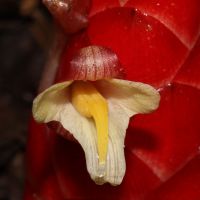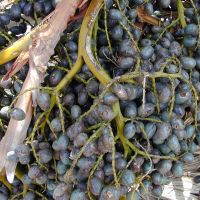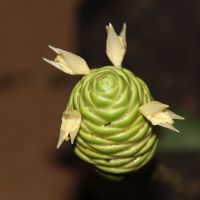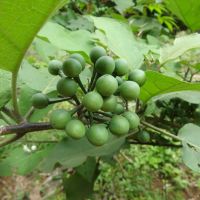ຊາປ່າ / Wild Tea
APA 6th ed. ຊາປ່າ / Wild Tea. (2019, July 23). Retrieved from https://www.phakhaolao.la/kb/0000477
MLA 8th ed. ຊາປ່າ / Wild Tea. Pha Khao Lao, 23 July 2019, https://www.phakhaolao.la/kb/0000477.
Chicago 17th ed. Pha Khao Lao. 2019. "ຊາປ່າ / Wild Tea." Published July 23, 2019. https://www.phakhaolao.la/kb/0000477.

Camellia assamica var. kucha Hung T. Chang & H.S.Wang
Camellia dishiensis F.C.Zhang, X.Y.Chen & G.B.Chen
Camellia multisepala Hung T. Chang & Y.J. Tang
Camellia polyneura Hung T. Chang & Y.J. Tang
Camellia scottiana Choisy
Camellia theifera Griff.
Thea assamica J.W. Mast.
Thea chinensis var. assamica (J.W. Mast.) Pierre
Thea viridis var. assamica (J.W. Mast.) Choisy
Tea plant is an evergreen tree or shrub, up to 25 m tall. Trunk is smooth, yellowish or brownish grey. New branchlets and terminal buds are puberulous or pubescent. Leaves are alternate, elliptic, oblong or obovate, 6–25 cm × 3–8 cm, green, hairy underneath, becoming leathery. Axillary fragrant white flowers, 4 cm across, are borne singly or in clusters of up to 4. Sepals, 5, are sub-orbicular or broadly ovate, 3–5 mm long, outside glabrous, inside sericeous, margin ciliolate. Each flower has 5–7 rounded white petals, arranged in 1–2 whorls. The outer 1–3 petals are tinged green at apex. Stamens are numerous, in 3–5 whorls, 7–16 mm long with pale yellow, glabrous filaments. The outer filaments are basally adnate to petals for 1–3 mm. Ovary is oblate or globose, sericeous; ovules are 2–4 per carpel; style is 6–15 mm long, glabrous or basally sparsely sericeous and gradually becoming glabrous upwards, apically 3-lobed for 1–3 mm. Capsule is oblate, bicoccal or globose, 17–45 mm in diameter, 12–20 mm in height, with 1–3 locules and 1–2 seeds per locule; pericarp 0.5–1.5 mm thick. Seeds are brown or fuscous, globose, hemispherical or polyhedral, 1.2–2 cm in diameter, glabrous (Zhao et al. 2017).
Tea is an important crop for many reasons. It is a refreshing and healthy beverage, with a long history of consumption in many countries around the world and a major role in cultural and social life in many regions. In the eighteenth century, tea cultivation and export was central to the development of global trade routes, caused wars and even led to revolution. Generally believed to have health benefits, tea is known to contain antioxidants and to have less caffeine than coffee.
Mental health: Drinking tea can create a calmer but more alert state of mind, it lowers the chance of having cognitive impairment, lowers stress hormone levels, and eases irritability, headaches, nervous tension and insomnia. The small amount of caffeine in tea may also cause a temporary improvement in short-term memory.
Heart and other organs: Tea may reduce risk of heart attack and stroke, and may protect against heart disease. Tea is thought to help lower cholesterol and lower blood pressure. It also aids digestion, helping to reduce intestinal inflammation.
Skin: Tea (without milk or sugar) is calorie-free and helps to combat dehydration. The antioxidants are helpful in treating acne.
Illness and disease: Tea is said to strengthen the immune defenses, protect against cancer, help prevent arthritis, fight infection. reduce the risk of Parkinson’s disease. Tea has been credited with helping many conditions, such as food poisoning, diabetes, high blood sugar, low iron levels and nasal decongestion.


























